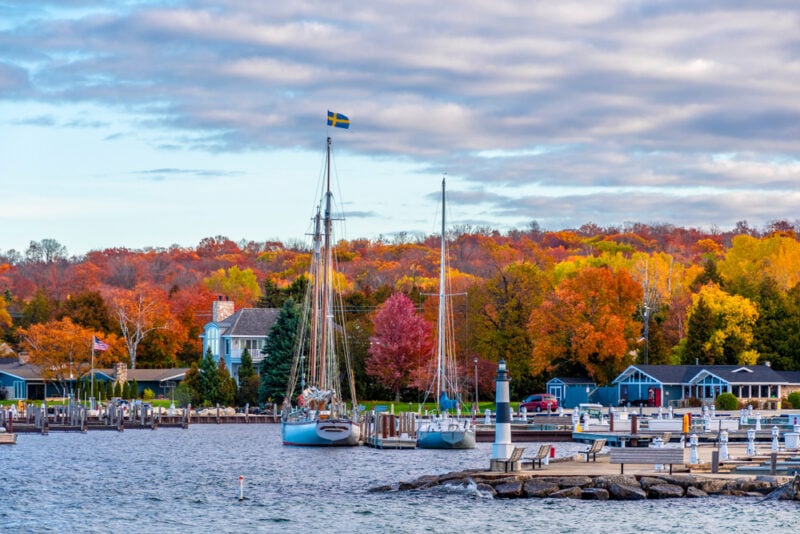The 30 Richest Neighborhoods in Wisconsin: Luxury Real Estate Markets and Affluent Communities
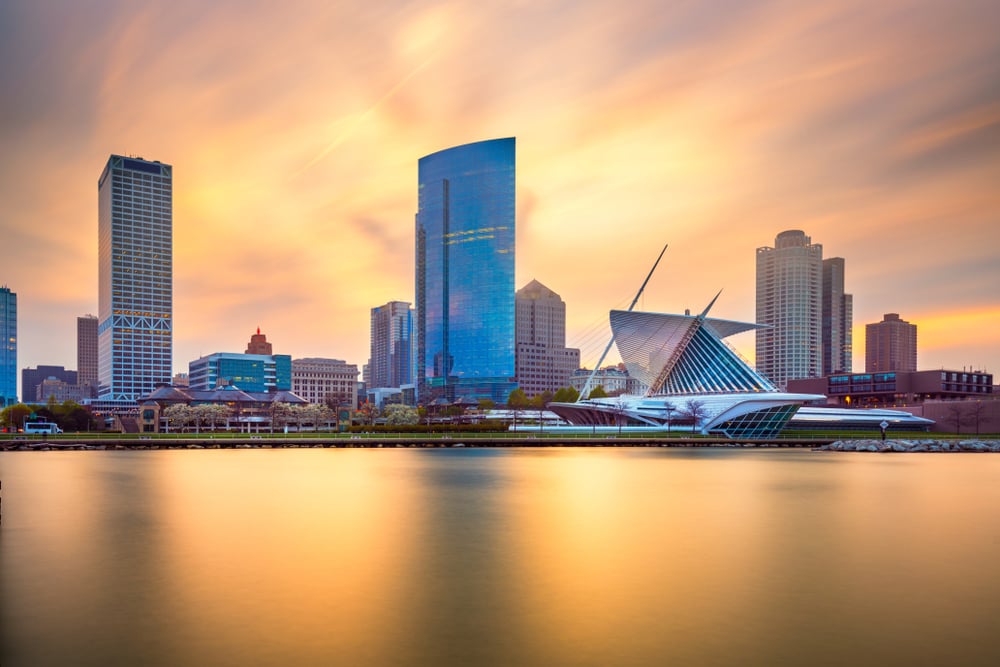
Wisconsin’s real estate landscape reveals distinct patterns of wealth concentration across its most affluent neighborhoods. These communities showcase varying levels of prosperity through median home values, household incomes, and overall economic stability that define the state’s upper-tier residential areas.
The distribution of Wisconsin’s wealthiest neighborhoods spans from established lakefront communities to emerging suburban enclaves, each offering unique characteristics that attract high-income residents.
Many of these areas benefit from proximity to major employment centers, quality school districts, and desirable amenities that contribute to their elevated property values and demographic profiles.
Here are the 30 richest neighborhoods in Wisconsin:
1. River Hills
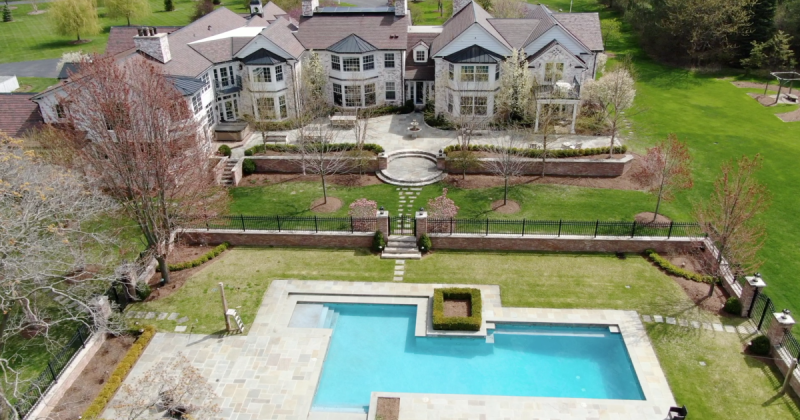
River Hills stands as Wisconsin’s wealthiest community, located in Milwaukee County along the Milwaukee River. This exclusive village maintains a population of just 1,602 residents across expansive residential estates.
The community boasts a remarkable mean household income of $283,369. Home values reflect this affluence, with median prices reaching $847,367 according to recent data.
River Hills enforces a five-acre minimum lot size requirement, ensuring privacy and exclusivity for residents. The wooded setting provides a secluded atmosphere while remaining minutes from downtown Milwaukee.
Wealthy Milwaukee residents began establishing summer homes in River Hills during the 1920s. This tradition of affluence has continued, making it a premier destination for high-income families seeking suburban luxury.
The village combines natural beauty with economic prosperity, featuring large estates nestled among mature trees and scenic river views.
2. Chenequa
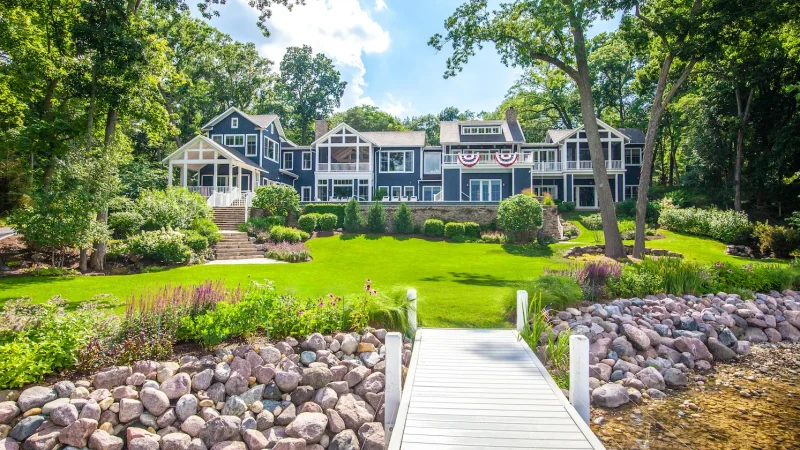
Chenequa stands as one of Wisconsin’s wealthiest communities, with residents earning an average income of $456,817. This small village in Waukesha County has a population of just 526 people.
The median home price in Chenequa reaches $6,785,400, making it the most expensive lake town for real estate in Wisconsin. The community sits along picturesque lakefront property that contributes to its high property values.
Education levels in Chenequa exceed national averages significantly. About 56% of adults hold bachelor’s degrees or higher, compared to 31% nationwide.
Income distribution varies across different neighborhoods within the village. Median household income ranges from $58,056 in lower-income areas to $162,554 in the highest-earning neighborhoods.
The village’s location near lakes and its proximity to Milwaukee make it an attractive destination for wealthy residents seeking luxury living.
3. Merton
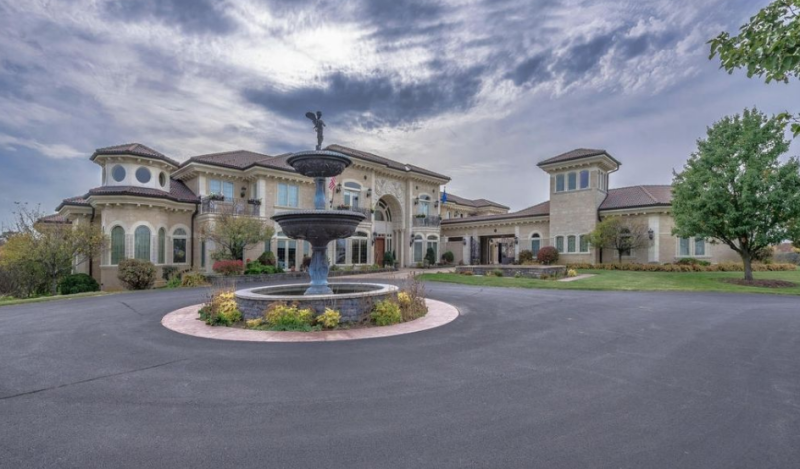
Merton stands as one of Wisconsin’s wealthiest communities, located in Waukesha County in the southeastern part of the state. The city has established itself among the top-tier affluent areas in Wisconsin.
The median home price in Merton reaches $584,913, reflecting the premium real estate market that characterizes this wealthy enclave. This substantial home value demonstrates the desirability and exclusivity of the area.
Residents of Merton enjoy a mean income of $151,128, placing the community well above state and national averages. This high income level supports the elevated cost of living and premium housing market.
The neighborhoods within Merton show significant variation in quality and value. Market forces have created distinct areas where residents prefer to live, with these premium locations typically featuring lower crime rates and enhanced quality of life amenities.
4. Whitefish Bay

Whitefish Bay stands as one of Wisconsin’s most affluent communities, located in Milwaukee County along Lake Michigan’s western shore. The village maintains a population of approximately 14,954 residents.
The median home price reaches $511,073, reflecting the area’s desirable real estate market. Household incomes average significantly above state levels, with mean earnings of $174,093.
Tree-lined streets and historic architecture define the community’s character. The village offers a family-friendly atmosphere with well-maintained residential properties and commercial districts.
Whitefish Bay provides residents access to parks, beaches, and local events throughout the year. The community benefits from its proximity to both Lake Michigan’s natural amenities and Milwaukee’s urban resources.
The village contains over 4,800 residential properties and more than 100 commercial establishments. This balance creates a vibrant living environment for families and professionals seeking an upscale suburban lifestyle.
5. Fox Point

Fox Point stands as one of Wisconsin’s wealthiest communities, located in Milwaukee County along the North Shore. The city has a population of 6,608 residents living in an affluent residential setting.
The average household income in Fox Point reaches $239,298 as of 2023. This figure places it among the top-earning cities in the state for communities with at least 5,000 people.
Real estate values reflect the community’s prosperity. The median home value sits at $487,822, making Fox Point properties some of the most expensive in Wisconsin. Home prices significantly exceed the state average of $297,250.
Fox Point offers residents proximity to Lake Michigan and Milwaukee. The community maintains a reputation for safe streets and peaceful neighborhoods. Its location provides access to outdoor activities and scenic lake views while remaining close to urban amenities.
The cost of living in Fox Point runs 1.1 times higher than the national average.
6. Elm Grove
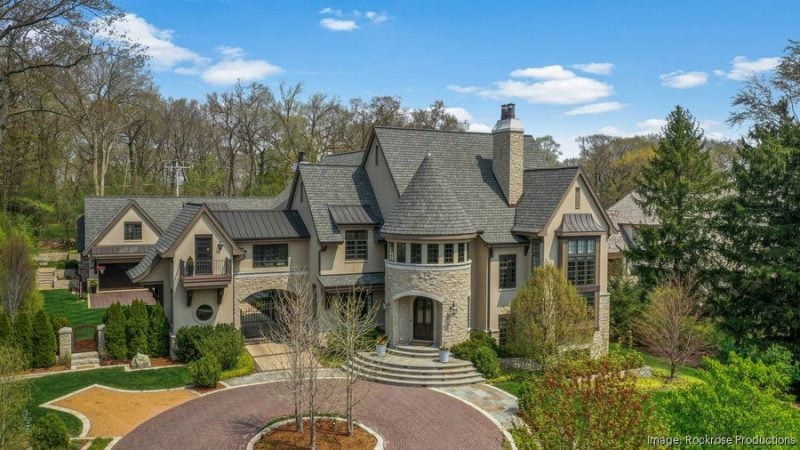
Elm Grove ranks as the wealthiest suburb in the Milwaukee area according to recent rankings by ZIP code. This affluent community maintains a median household income of $128,672 with some neighborhoods reaching $165,789.
The suburb has a population of 6,513 residents. Most homes are owner-occupied at 88.4%, with a median home price of $555,192.
Education levels contribute significantly to the area’s wealth. In Elm Grove, 62% of adults hold bachelor’s degrees or higher, compared to 31% nationwide.
The community sits just 20 minutes from Milwaukee while preserving a small-town atmosphere. Elm Grove is known for its low crime rates and highly-rated school system.
Property values remain consistently high throughout the area. The average rent reaches $1,256 for those who choose to lease rather than purchase.
7. Mequon

Mequon stands as one of Wisconsin’s wealthiest cities, located in Ozaukee County along Lake Michigan’s western shores. The city houses approximately 25,000 residents who enjoy substantial financial prosperity.
The median household income reaches $135,000, with some reports showing mean incomes of $190,778. Home values reflect this affluence, with median prices around $527,819.
Mequon offers residents a blend of suburban tranquility and urban accessibility. The city sits north of Milwaukee, providing convenient access to metropolitan amenities while maintaining a peaceful residential atmosphere.
Large estates characterize much of Mequon’s landscape. The community features beautiful natural surroundings, including scenic parks, nature preserves, and the Milwaukee River.
Safety represents another key attribute, with Mequon maintaining one of the lowest crime rates in the Metropolitan Milwaukee area. This combination of wealth, safety, and natural beauty makes it highly desirable for affluent families.
8. Dousman
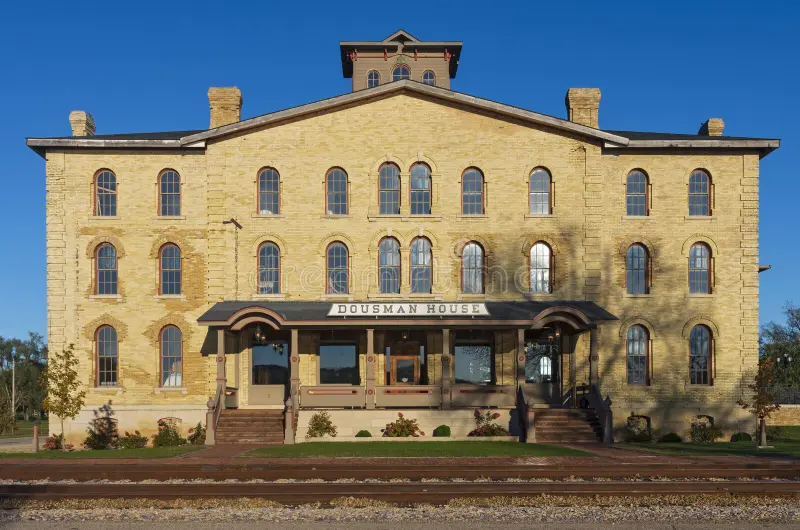
Dousman stands as one of Wisconsin’s most affluent communities with a median home value of $463,062. This Waukesha County village significantly exceeds the state’s average home price of $220,185.
The village houses 2,418 residents across 802 homes and apartments. Single-family detached homes dominate the housing market, representing 55% of all residential properties.
Located 30 miles from downtown Milwaukee, Dousman offers suburban living with urban accessibility. The community borders Ottawa to the south and Waterville to the east.
Founded in 1881, this tight-knit village maintains its charm through community events like Derby Days festival. The annual July celebration features the Wisconsin State Frog Jump and attracts visitors throughout the region.
Dousman’s real estate market reflects its desirability among Wisconsin’s wealthy communities. The village combines scenic landscapes with excellent amenities, creating premium property values that place it among the state’s most expensive housing markets.
9. Oconomowoc

Oconomowoc stands as one of Wisconsin’s most affluent communities, located in Waukesha County. The city attracts wealthy residents with its picturesque lakefront properties and upscale neighborhoods.
The Oconomowoc West neighborhood ranks among the top 15% highest income areas in America. This exclusive area has higher income levels than 89.7% of neighborhoods nationwide.
Home values in Oconomowoc reflect the area’s desirability and economic strength. The best neighborhoods feature properties that command premium prices due to their prime locations and quality amenities.
Residents benefit from the community’s strategic location near Milwaukee while enjoying a more suburban lifestyle. The area’s wealth concentration makes it a standout destination for affluent families seeking high-quality living.
Oconomowoc’s economic profile places it firmly among Wisconsin’s wealthiest municipalities, with consistent rankings in statewide wealth assessments.
10. Delafield
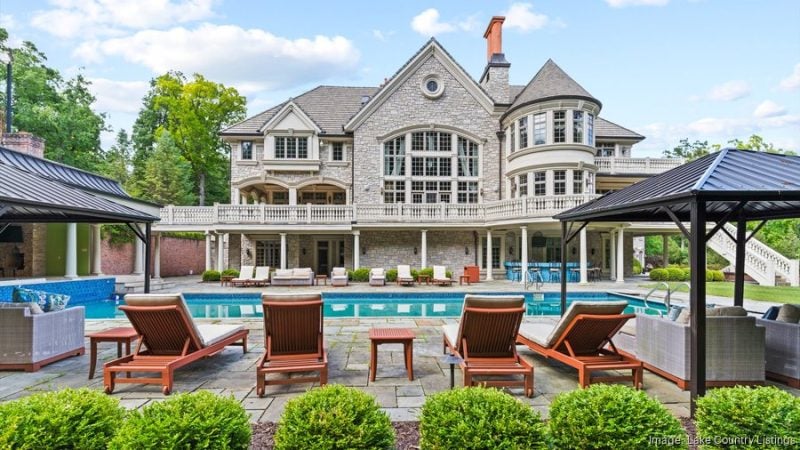
Delafield ranks among Wisconsin’s most expensive communities with a median home value of $720,088. The city’s real estate consistently places among the most costly in America.
This affluent community of 7,203 residents sits along Lake Nagawicka in the Lake Country region. The city offers upscale residential neighborhoods and easy access to Milwaukee via I-94.
The median household income reaches $114,867, placing Delafield in the 95th percentile nationally. Education levels contribute to this prosperity, with 50% of adults holding bachelor’s degrees or higher.
Delafield combines historic downtown charm with natural amenities in the Kettle Moraine hills. The city provides residents with high-quality neighborhoods and scenic lakefront living.
Housing costs reflect the area’s desirability and affluent demographics. The community maintains its status as one of Wisconsin’s premier residential destinations.
11. Wauwatosa
Wauwatosa stands as one of Milwaukee’s most affluent suburbs, consistently ranking among Wisconsin’s wealthiest communities. The city attracts residents with its blend of upscale neighborhoods and proximity to Milwaukee’s urban amenities.
Property values in Wauwatosa have experienced steady appreciation over the past decade. The community features several high-value residential areas that contribute to its reputation as a premium Milwaukee suburb.
The suburb offers peaceful neighborhoods with excellent access to restaurants and public transportation. Residents benefit from the city’s location near Lake Michigan while maintaining a suburban lifestyle.
Wauwatosa’s real estate market reflects its desirability among families and professionals. The combination of quality schools, safe neighborhoods, and convenient location drives continued demand for housing in the area.
The city’s economic stability and strong community amenities support its position among Wisconsin’s most expensive places to live.
12. Brookfield
Brookfield stands as one of Wisconsin’s most affluent communities, with a median household income of $111,561. This places the city in the 94th percentile nationally for household earnings.
The community attracts highly educated residents, with 62% of adults holding bachelor’s degrees or higher. This educational attainment significantly exceeds the national average of 31%.
Real estate values reflect the area’s prosperity, with a median home cost of $561,058. While expensive by Wisconsin standards, these prices represent some of the state’s most desirable residential markets.
The city maintains two distinct neighborhoods, each offering quality amenities and low crime rates. Currently, 200 homes are available for sale, with prices ranging from modest properties to luxury estates valued at $4.6 million.
Brookfield’s combination of high incomes, educated residents, and premium real estate solidifies its position among Wisconsin’s wealthiest communities.
13. Mukwonago
Mukwonago stands as one of Wisconsin’s most affluent communities with a median household income of $110,703. This places the village in the 94th percentile nationally for household earnings.
The average home value reaches $479,361, reflecting a 3.9% increase over the past year. This significant appreciation demonstrates the area’s desirability and strong real estate market.
The village has a population of 8,492 residents across three neighborhoods. Educational attainment contributes to the area’s wealth, with 35% of adults holding bachelor’s degrees or higher compared to 31% nationwide.
Housing quality varies considerably throughout Mukwonago’s neighborhoods. The best areas by market value tend to offer lower crime rates and enhanced quality of life for residents.
Recent residential construction indicates continued growth and investment in the community. This development pattern suggests ongoing economic vitality and population expansion.
14. Hartland
Hartland stands as one of Wisconsin’s most affluent communities with a median household income of $99,361. This places the city in the 91st percentile nationally for household earnings.
The community’s real estate market reflects its prosperity. The average home value reaches $640,315 as of 2025, representing a 2.3% increase over the past year.
Hartland’s housing market ranks among Wisconsin’s most expensive. The median house value of $512,695 demonstrates the area’s premium status within the state’s real estate landscape.
Education levels contribute significantly to the area’s wealth. Approximately 44% of adults hold bachelor’s degrees or higher, compared to 31% nationwide.
The city houses 10,065 residents across 3,975 total housing units. This population enjoys one of Wisconsin’s highest standards of living, supported by strong property values and above-average incomes.
15. Germantown
Germantown stands as one of Wisconsin’s most affluent communities with a median household income of $91,881. This places the city in the 87th percentile nationally for household incomes.
The suburb of Milwaukee has a population of 20,940 residents in Washington County. Most residents own their homes in this sparse suburban setting.
Education levels contribute significantly to the area’s prosperity. About 44% of adults hold bachelor’s degrees or higher, compared to 31% nationwide.
Real estate values reflect the community’s wealth. Median home values reach $465,287, making Germantown real estate among the most expensive in Wisconsin.
The city offers residents numerous amenities including parks and entertainment venues. Germantown consistently ranks as one of the best places to live in Wisconsin.
16. Pewaukee
Pewaukee ranks as the 8th richest town in Wisconsin with a population of 15,914. The city’s real estate market features some of the most expensive properties in the state.
The community benefits from strong corporate presence. Harken, Inc., a globally recognized manufacturer of sailboat and yacht gear, maintains its headquarters in Pewaukee.
Median household income varies significantly across different areas of the city. High-earning neighborhoods are concentrated in specific zones, while moderate and lower-income areas create economic diversity.
The housing market reflects the city’s affluent status. Home values remain consistently high compared to other Wisconsin communities, though they don’t reach the levels of the most expensive U.S. markets.
Pewaukee’s seven distinct neighborhoods each contribute to the city’s overall character. The area attracts residents seeking quality amenities and proximity to Milwaukee’s metropolitan advantages.
17. Sussex
Sussex stands as one of Wisconsin’s most affluent communities with a median household income of $104,338. This places the village in the 92nd percentile nationally for household earnings.
The community benefits from high educational attainment levels. Approximately 45% of adults hold bachelor’s degrees or higher, significantly exceeding the national average of 31%.
Sussex real estate ranks among the most expensive in Wisconsin. The village’s proximity to Milwaukee, located just 19 miles northwest, contributes to its desirability and property values.
With a population of 12,162 residents, Sussex maintains its status as a medium-sized but wealthy community. The village offers four distinct neighborhoods, each contributing to the area’s overall affluence.
Educational achievement and income levels correlate strongly in Sussex, creating a cycle of prosperity that sustains the community’s economic standing.
18. Menomonee Falls
Menomonee Falls ranks as one of Wisconsin’s most affluent communities with a median household income of $93,286. This figure represents a 20% increase above the state’s median income of $74,631.
The village’s prosperity stems from its educated population. Nearly 46% of adults hold bachelor’s degrees or higher, compared to 31% nationwide.
Located in the Milwaukee Metropolitan Area, Menomonee Falls offers residents access to diverse economic opportunities. The community has experienced consistent income growth across multiple neighborhoods over recent years.
Real estate values reflect the area’s wealth, with home prices exceeding Wisconsin’s average of $220,185. The village spans 33 square miles and serves as home to 39,700 residents.
Menomonee Falls combines small-town atmosphere with metropolitan convenience. Its strong economic foundation and educated workforce contribute to its position among Wisconsin’s wealthiest communities.
19. Greendale
Greendale ranks as a prosperous village in Wisconsin with a median household income of $81,401. This places the community in the 80th percentile nationwide for household earnings.
The village has a population of 14,472 residents across three neighborhoods. It stands as Wisconsin’s 61st largest community by population size.
Education levels contribute significantly to Greendale’s wealth profile. Nearly 48% of adults hold bachelor’s degrees or higher, compared to 31% nationally.
The technology sector provides substantial economic strength to the area. Greendale employs more people in computers and math than 95% of places across the United States.
Housing values reflect the community’s affluence, with neighborhoods varying significantly in quality and price. The best areas command premium prices based on market demand and desirability.
20. Waukesha
Waukesha stands as one of Wisconsin’s most affluent communities with a median household income of $91,125. This places the city in the 87th percentile nationally for household earnings.
The city benefits from its location in Waukesha County, which ranks as Wisconsin’s wealthiest county. Educational attainment contributes significantly to the area’s prosperity.
Approximately 45% of Waukesha adults hold bachelor’s degrees or higher, compared to 31% nationwide. This educational advantage correlates directly with the community’s higher income levels.
Housing costs in Waukesha reflect the area’s economic strength, with home values exceeding Wisconsin’s state average of $220,185. The city attracts residents seeking quality neighborhoods and strong economic opportunities.
Waukesha’s proximity to Milwaukee provides access to metropolitan amenities while maintaining its distinct community character. The combination of education, income, and location makes it a desirable destination for Wisconsin’s affluent residents.
21. New Berlin
New Berlin stands as one of Wisconsin’s most desirable suburban communities, with neighborhoods ranked by median home values reflecting strong market demand. The city attracts residents seeking quality of life in well-established residential areas.
Housing disparity exists across New Berlin’s various neighborhoods. The most sought-after areas command higher property values due to their amenities and location advantages.
Real estate appreciation has remained steady in top-performing neighborhoods. These areas benefit from proximity to employment centers and quality local schools.
Income levels vary significantly across different sections of the city. Higher-earning residents typically concentrate in neighborhoods with established infrastructure and community amenities.
The city’s appeal stems from its blend of suburban comfort and accessibility to urban centers. New Berlin continues attracting families and professionals seeking stable residential investments in southeastern Wisconsin.
22. North Shore
The North Shore represents Milwaukee’s most prestigious residential corridor along Lake Michigan’s western shoreline. This affluent region extends from the upper east side northward through several exclusive communities.
The area encompasses multiple wealthy municipalities including Fox Point, Whitefish Bay, and Shorewood. These communities consistently rank among Wisconsin’s most expensive places to live.
Fox Point stands out with an average household income of $239,298 as of 2023. The city maintains a population of 6,608 residents and offers upscale residential living with lake proximity.
Whitefish Bay also ranks among the state’s richest cities for 2024. The community provides residents with scenic lake views and easy access to Milwaukee’s amenities.
The North Shore’s appeal stems from its combination of lakefront properties, established neighborhoods, and proximity to urban conveniences. Many homes feature premium locations with direct or nearby lake access, contributing to elevated property values throughout the region.
23. Bay View
Bay View is a neighborhood in Milwaukee, Wisconsin with a population of 16,526. The area sits south of downtown Milwaukee and has become a sought-after location for residents and investors.
The median household income in Bay View is $74,121. This places the neighborhood at about average for median income in the United States, with household incomes in the 58th percentile.
Bay View offers residents a dense suburban feel where most residents own their homes. The neighborhood features a charming mix of Victorian homes and cozy bungalows that appeal to those seeking a close-knit community atmosphere.
The area provides numerous local amenities including bars, restaurants, coffee shops, and parks. This combination of housing options and local attractions has made Bay View one of the desirable neighborhoods in Milwaukee County.
24. Shorewood
Shorewood stands as one of Wisconsin’s most affluent communities with a median household income of $94,705. This places the city in the 89th percentile for household incomes nationwide.
The community’s wealth correlates strongly with education levels. About 78% of adults hold bachelor’s degrees or higher, compared to just 31% nationally.
Shorewood’s real estate market reflects its prosperity. Home prices exceed Wisconsin’s state average of $220,185, making it significantly more expensive than most areas.
The neighborhood attracts families and young professionals seeking quality amenities. Its proximity to Lake Michigan and strong sense of community contribute to its desirability.
Top-rated schools and stable property values make Shorewood attractive for long-term real estate investment. The area offers opportunities for both appreciation and rental income potential.
25. Cedarburg
Cedarburg ranks among Wisconsin’s most affluent communities with a median home value of $526,717. The town’s real estate market represents some of the most expensive in the state.
Located in Ozaukee County just north of Milwaukee, Cedarburg attracts wealthy residents seeking small-town charm. The community of 12,527 residents maintains high property values through its historic character and desirable location.
Educational attainment drives the area’s prosperity, with 58% of adults holding bachelor’s degrees or higher. This compares favorably to the national average of 31%.
Neighborhood income levels vary significantly across Cedarburg. Median household incomes range from $38,750 in lower-income areas to $162,768 in the most affluent neighborhoods.
The town’s historic downtown, waterfront properties, and spacious lots contribute to its appeal among high-income buyers. Quality of life factors and lower crime rates further enhance property values.
26. Glendale
Glendale ranks among Wisconsin’s wealthier communities with a median household income of $80,733. This places the city in the 79th percentile nationally for household income.
The community features diverse housing options from executive lots along the Milwaukee River to charming turn-of-the-century neighborhoods. Home values vary significantly across different areas of Glendale.
Educational attainment contributes to the area’s prosperity. Approximately 54% of adults hold bachelor’s degrees or higher, compared to 31% nationwide.
Glendale offers single-family residential homes in quiet neighborhoods. The housing market includes spacious suburban properties and more modest residential areas.
The city’s proximity to Milwaukee provides residents access to urban amenities while maintaining a suburban lifestyle. This location advantage supports property values and attracts professionals seeking quality neighborhoods.
27. Appleton
Appleton represents one of Wisconsin’s more affluent communities, with several neighborhoods commanding premium prices. The city features diverse residential areas that attract higher-income residents.
North Meadows stands out as the most expensive neighborhood in Appleton. Average home prices in this area hover around $400,000, reflecting the premium construction quality and desirable location.
The neighborhood offers an ideal combination of privacy and convenience for residents. This balance contributes to its status as a sought-after residential area.
Appleton’s housing market shows significant variation between different neighborhoods. The city’s real estate values reflect the quality disparities across various residential areas.
Several zip codes within the greater Appleton metro area demonstrate strong property values. These areas continue to attract buyers willing to pay premium prices for desirable locations.
The city’s affluent neighborhoods feature well-maintained properties and established communities. These areas represent some of the most valuable real estate in the Fox Valley region.
28. Fond du Lac
Fond du Lac presents a stable investment landscape with a population of approximately 44,000 residents. The city demonstrates steady development that attracts investors seeking small-town charm with economic opportunities.
The median household income reaches $69,631, placing it in the 64th percentile nationally. This figure exceeds the national median, indicating strong earning potential for residents.
Housing values vary significantly across neighborhoods within the city. The Northeast area shows a median real estate price of $240,569, which remains less expensive than 70.6% of Wisconsin neighborhoods.
Educational attainment shows 26% of adults hold bachelor’s degrees or higher, compared to 31% nationwide. This educational foundation supports the area’s economic stability.
The rental market averages $1,535 monthly in certain neighborhoods. Crime rates tend to be lower in higher-value areas, contributing to overall quality of life for residents.
29. Kenosha
Kenosha sits along Lake Michigan’s shoreline in southeastern Wisconsin. The city’s median household income reaches $66,664, placing it near the national average.
This income level puts Kenosha households in the 59th percentile nationwide. About 29% of adults hold bachelor’s degrees or higher, slightly below the national rate of 31%.
The lakefront location contributes to property values throughout the city. Several neighborhoods feature higher-income residents concentrated near the water and in newer developments.
Kenosha’s economy benefits from its proximity to Milwaukee and Chicago. Manufacturing and healthcare sectors provide stable employment opportunities for residents.
The city’s housing market shows steady appreciation in select areas. Neighborhoods with lake access and newer construction typically command premium prices compared to other sections of the community.
30. Racine
Racine stands as Wisconsin’s fifth largest community with a population of 76,602 residents. The city features significant income variation across its 47 distinct neighborhoods.
The median household income in Racine varies considerably by area. High-earning neighborhoods are concentrated in specific districts, while other areas show more moderate income levels.
Housing in Racine ranges from affordable options to premium properties valued up to $1.5 million. The city’s real estate market reflects the economic diversity found throughout its neighborhoods.
Income disparity creates notable differences in neighborhood quality across Racine. The best areas by home value tend to correlate with higher median household incomes and improved quality of life indicators.
Racine’s position as a larger medium-sized city contributes to its diverse economic landscape and varied neighborhood characteristics.
Understanding Affluence in Wisconsin
Wisconsin’s wealth concentrates in specific geographic areas driven by manufacturing, agriculture, and healthcare industries, with cities like River Hills and Chenequa leading household incomes above $280,000. Historical development patterns and demographic shifts have created distinct affluent communities throughout the state.
Economic Contributing Factors
Wisconsin’s affluent neighborhoods benefit from the state’s diverse economic foundation built on manufacturing, agriculture, and healthcare sectors. The state’s manufacturing base includes major corporations in machinery, food processing, and paper products.
Key Economic Drivers:
- Manufacturing and industrial production
- Agricultural enterprises and dairy farming
- Healthcare and biotechnology companies
- Financial services sector
Cities like River Hills achieve mean incomes of $283,369 due to proximity to Milwaukee’s corporate headquarters and professional services. Chenequa leads with average household incomes of $456,817, reflecting concentrated wealth in small communities.
The Fox Cities region, including Green Bay and Appleton, demonstrates how regional economic hubs create surrounding affluent suburbs. These areas benefit from stable employment in manufacturing and service industries.
Property values in wealthy Wisconsin neighborhoods often exceed $420,000, with some premium areas experiencing significant appreciation. This real estate growth reflects underlying economic strength and desirability of these communities.
Demographic Trends
Wisconsin’s wealthiest neighborhoods typically feature small populations with high concentrations of educated professionals. Chenequa exemplifies this pattern with only 540 residents despite exceptional affluence.
Demographic Characteristics:
- Higher education levels
- Professional and executive occupations
- Smaller community sizes
- Lower poverty rates
Many affluent Wisconsin communities attract residents seeking quality of life benefits including natural beauty and strong schools. The state’s 5.9 million population includes numerous cities with median household incomes surpassing national averages.
Wealthy neighborhoods often cluster around major metropolitan areas like Milwaukee and Madison. These communities benefit from urban employment opportunities while maintaining suburban or rural character.
Historical Context
Wisconsin’s wealth patterns developed through industrial growth in the late 19th and early 20th centuries. Milwaukee emerged as a major manufacturing center, creating surrounding affluent suburbs.
The state’s agricultural heritage, particularly dairy farming, established generational wealth in rural communities. This foundation supported development of processing industries and related businesses.
Historical Development Factors:
- Industrial revolution manufacturing growth
- Agricultural prosperity and processing
- Transportation infrastructure development
- Educational institution establishment
Post-World War II suburban expansion created many of today’s affluent neighborhoods. Families with industrial and agricultural wealth moved to exclusive residential areas around major cities.
The establishment of major corporations and healthcare systems provided high-paying employment that sustained these wealthy communities. Geographic advantages including lakefront properties and natural resources enhanced property values over time.
How Wealth Impacts Neighborhood Lifestyles
Wealth concentration in Wisconsin’s richest neighborhoods creates distinct lifestyle patterns that separate these communities from average areas. Higher property values drive exclusive housing markets, while residents access premium amenities and superior educational opportunities.
Real Estate Characteristics
Wealthy Wisconsin neighborhoods feature dramatically different housing markets compared to typical areas. River Hills leads with median home prices of $847,367, while properties span large residential estates exceeding 3 acres.
Premium Housing Features:
- Custom-built homes with architectural significance
- Expansive lot sizes providing privacy and exclusivity
- High-end finishes and luxury amenities
- Professional landscaping and maintenance
Property appreciation rates in affluent areas often outpace state averages. Even emerging wealthy neighborhoods like Metcalfe Park saw property values triple during revitalization periods.
The housing stock typically includes historical significance or contemporary luxury designs. Many properties feature multi-car garages, swimming pools, and guest accommodations.
Community Amenities
Wisconsin’s wealthiest neighborhoods provide residents with exclusive recreational and social facilities. Private country clubs, golf courses, and tennis facilities become central gathering spaces for community members.
Exclusive Community Features:
- Private recreational clubs and facilities
- Maintained parks and walking trails
- Upscale shopping and dining establishments
- Cultural venues and event spaces
These neighborhoods often maintain their own community centers and organize exclusive social events. Residents access premium services including concierge-style maintenance and security systems.
Local businesses cater specifically to affluent clientele. Specialty retailers, high-end restaurants, and professional services cluster in these areas to serve wealthy residents.
Education and School Quality
Wealthy districts in Wisconsin demonstrate superior educational resources and outcomes. These areas benefit from higher property tax revenues that fund advanced educational programs and facilities.
Educational Advantages:
- Newer school facilities with modern technology
- Lower student-to-teacher ratios
- Extensive extracurricular programs
- Advanced placement and specialized courses
Districts in affluent areas attract experienced teachers through competitive compensation packages. Students access resources including updated textbooks, laboratory equipment, and athletic facilities.
The concentration of educated parents also influences school performance. Higher rates of parental involvement and educational support create additional advantages for students in these districts.
Private school options expand in wealthy areas, providing alternative educational pathways for families seeking specialized programs or smaller class sizes.

